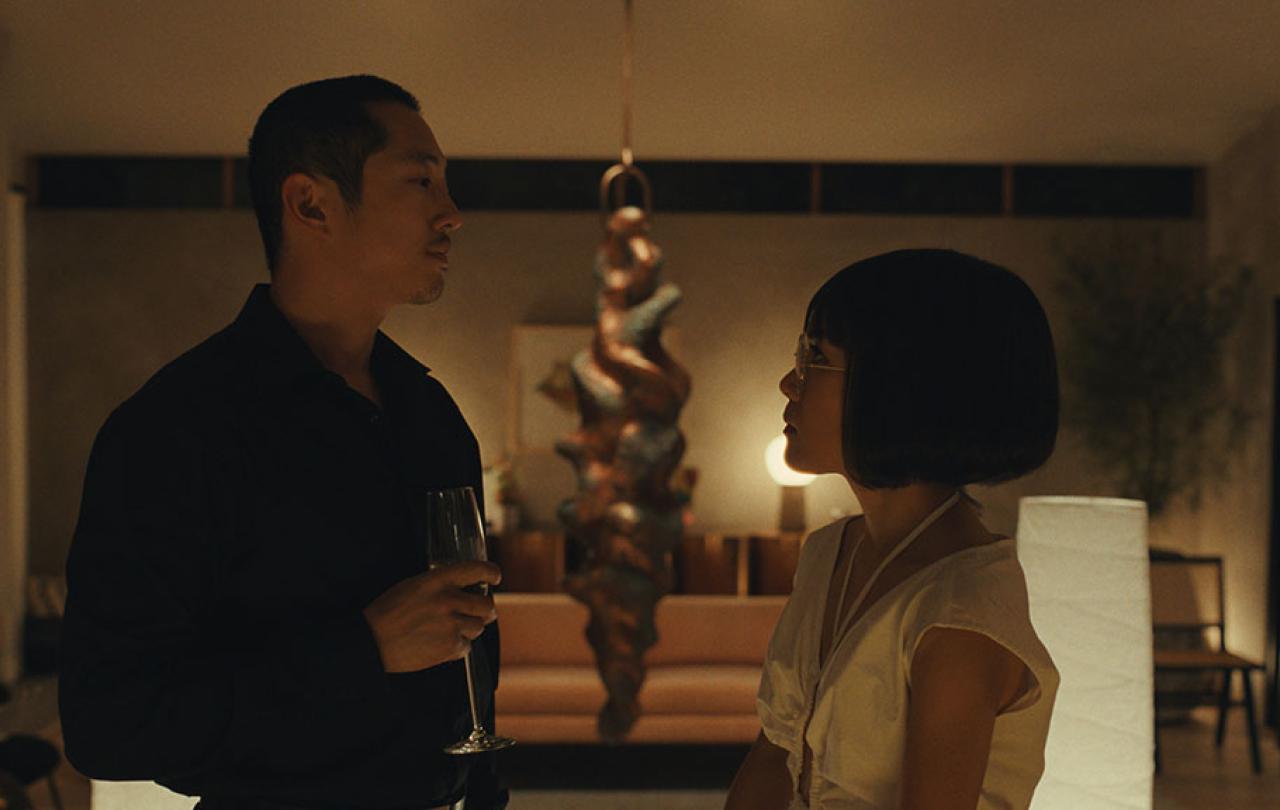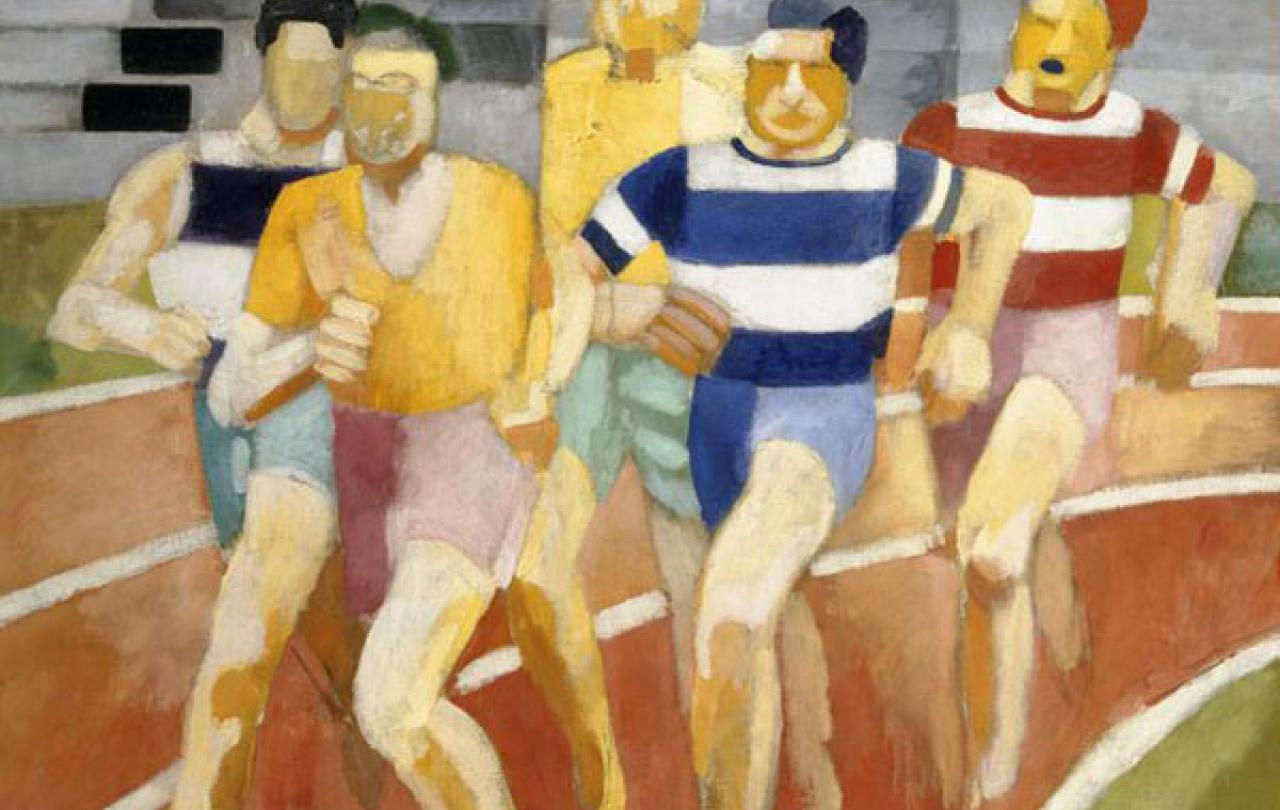
Not since the ground-breaking series Breaking Bad can I remember such a captivating opening sequence. A road rage incident escalates. And escalates. And escalates. Just when you think things can’t get any worse in this dark Netflix comedy, the vicious consequences of the feud unravels further. I couldn’t stop watching, and soon Beef had me firmly dragged into the world of two protagonists, who may have had very different experiences of the Korean American dream but were more alike than they would ever dare to admit.
I am a huge fan of the global Korean cultural renaissance known as the K-wave. For me it started with Psy, the breakout Korean singing superstar hitting number one in the UK charts with Gangnam Style in 2012. Then there was BTS, the Korean Take That equivalent, who duetted with Coldplay and became the best-selling band in the world. Parasite was a remarkable movie, that grabbed multiple awards at the Academy Awards of 2020. Squid Game took the concepts of battle royale and Hunger Games to a whole new level and became a Netflix number one global download hit in 2021. Throughout the K-wave decade I have also been an ardent devotee of Samsung, the biggest brand in mobile phone innovation.
Something important is happening with the global recognition of Korean culture. Beef represents another step forward showcasing the Korean diaspora cultural ascendence. At this year’s Emmy Awards it is the third most nominations. It follows on from the Canadian comedy series Mr Kim, which offered an affectionate and amusing exploration of the experience of a second-generation Korean family coming to terms with life in Toronto. Beef similarly presents the US-Korean cultural experience without explanation or apology. It is powerfully assumed that this is legitimate and normal. There is no embarrassment, no exposition: just a cultural and narrative world that the viewer has to catch up with as soon as possible before they miss something.
Beef is Korean and American. It is a comedy and a tragedy. It is also, ultimately, a morality and immorality play. It explores three main issues: anger, identity and aspiration and how they interact with one another – for good and for evil.
But the rage runs deep. It is toxic to everyone it touches. What can break its power?
The instigating event in the show is a road rage incident between Daniel, a second-generation Korean immigrant to the US whose family faced financial ruin when a relative used their motel for illegal activity, and Amy, also a second-generation Korean immigrant, who is on the cusp of banking a multi-million dollar deal. Everything Daniel attempts he fails at. He can’t even manage to successfully end his own life, or even return the faulty suicide equipment to the hardware store he bought it from. Amy, despite outward appearances is also struggling. She is estranged from her parents, stuck in a superficial relationship with her husband, and dealing with a demanding and dismissive mother-in-law and a daughter she hardly sees. The near miss in the car park comes at a pivotal moment for both of these strangers and flips a switch in them that they cannot let go.
The feud escalates between Amy and Daniel with increasingly high stakes and terrible consequences. The more we get to know about our two protagonists the more we understand why they have reacted in the extreme ways they have and how much they both have to lose. I found myself watching through my fingers as I was invested in the characters and was longing for some kind of forgiveness, repentance or reconciliation. At some points faith seemed tantalisingly close to providing an antidote to the beef, holding out hope even in the very last episode. At other points it seemed that love would find a way to stop the tide of anger and revenge. But the rage runs deep. It is toxic to everyone it touches. What can break its power?
If the church were to face up to its own identity issues, perhaps it could be of more help to individuals who brush shoulders with it.
The more we are drawn into the lives of Amy and Daniel, the more we realise that they are both wrestling with major issues of identity. Daniel is seemingly willing to go to any lengths to win the approval of his parents while also clinging so tightly to his brother that he stifles him. Amy too wrestles with a series of strained relationships. Both are lonely, feel unseen and misunderstood. They both carry dark secrets. They both are crippled by feelings of worthlessness and guilt. Amy’s sexual intimacy is inhibited by the sense of betrayal that was caused by her father’s infidelity. Daniel’s work quality is compromised because of the weight of despair and shame. While they both present to the world as successful and strong, inside they experience anxiety, purposelessness and anger.
Beef therefore provides a powerful exploration of identity issues. Male and female, rich and poor, married and single - no-one is exempt from the struggles of knowing who we are and where we fit in. There are moments in the series where the church looks like it has the answer. Going to church is normalised in the show as part of the Korean experience, which appears to be a culturally confident move. But the church is shown to be struggling with its own identity crisis. It accurately portrays the experience of ethnic-specific churches in the West. Yet despite being made up of diaspora communities, more often than not their liturgies, governance structures and forms and language of worship, are based on white western norms. The Korean cultural renaissance has not worked its way into our expression of faith yet. If the church were to face up to its own identity issues, perhaps it could be of more help to individuals who brush shoulders with it.
Beef offers a challenge to the prevailing aspirational culture often normalised by immigrant communities – if you work hard enough you can succeed.
What Dan and Amy have in common is their belief that value or worth in the world comes through the amount of money they have access to. They both graft and strive and lie and steal in order to gain the economic success their parents failed to achieve. Their competitiveness at work spills over into a drive to win at all costs. Riches is righteousness. Financial security is salvation. Wealth is worth. Annihilating the competition is victory. Yet the wealthy people in the show all come to realise the truth of what Jesus taught: “what good is it for someone to gain the whole world, yet forfeit their soul?”
Daniel is clearly faced with this choice right at the beginning of the series. He is at church when the words of a song seem to move him:
“Have you come to the end of yourself?
Jesus is calling.
Come to the Altar…”
This opportunity for a new start is juxtaposed with another. Daniel notices a possibility of ripping the church off financially, luring an ex-girlfriend back and replacing the worship leader. The church becomes the place where he can renounce or receive money, sex and power. He chooses the latter – to his own ultimate downfall.
As a second-generation immigrant, I was told that if I did well at school and set my sights on becoming a doctor or lawyer, then I could earn my place in the world. Qualifications could silence the xenophobes, money could buy me relationships and success could secure my future. Beef offers a challenge to this prevailing aspirational culture so often normalised by immigrant communities – if you work hard enough you can succeed. My Christian faith has changed that perspective for me. It showed me that financial gain was mono-dimensional, that chasing fool’s gold was a fool’s errand. Beef comes to the same conclusion, albeit with stronger language and adult themes. It takes a swipe at the hard- and cold-hearted calculus of personal aspiration, challenges consumptive materialism on its hollowed-out version of life and leaves it in the middle of nowhere to die.

